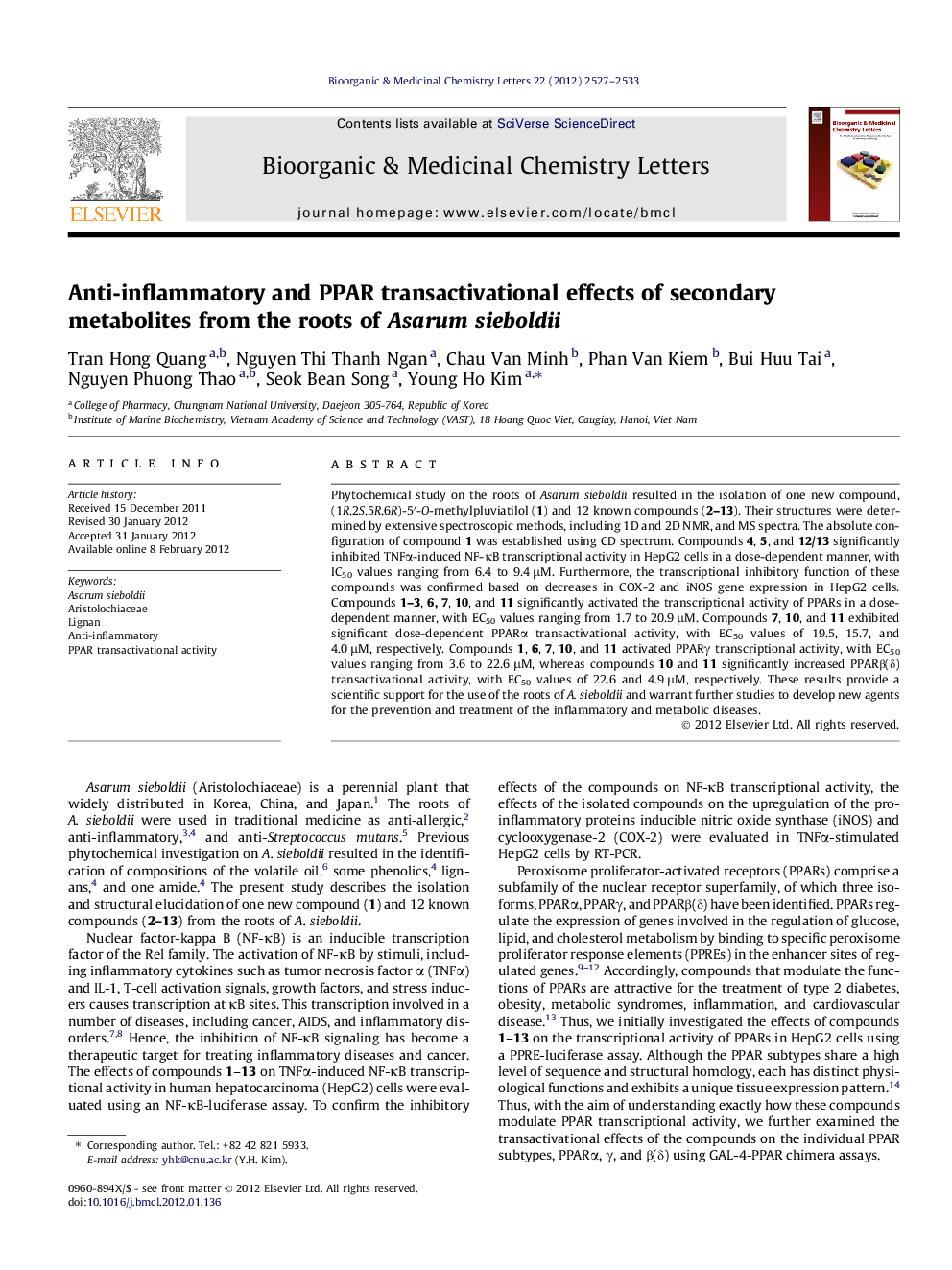| Article ID | Journal | Published Year | Pages | File Type |
|---|---|---|---|---|
| 1369966 | Bioorganic & Medicinal Chemistry Letters | 2012 | 7 Pages |
Phytochemical study on the roots of Asarum sieboldii resulted in the isolation of one new compound, (1R,2S,5R,6R)-5′-O-methylpluviatilol (1) and 12 known compounds (2–13). Their structures were determined by extensive spectroscopic methods, including 1D and 2D NMR, and MS spectra. The absolute configuration of compound 1 was established using CD spectrum. Compounds 4, 5, and 12/13 significantly inhibited TNFα-induced NF-κB transcriptional activity in HepG2 cells in a dose-dependent manner, with IC50 values ranging from 6.4 to 9.4 μM. Furthermore, the transcriptional inhibitory function of these compounds was confirmed based on decreases in COX-2 and iNOS gene expression in HepG2 cells. Compounds 1–3, 6,7, 10, and 11 significantly activated the transcriptional activity of PPARs in a dose-dependent manner, with EC50 values ranging from 1.7 to 20.9 μM. Compounds 7, 10, and 11 exhibited significant dose-dependent PPARα transactivational activity, with EC50 values of 19.5, 15.7, and 4.0 μM, respectively. Compounds 1, 6, 7, 10, and 11 activated PPARγ transcriptional activity, with EC50 values ranging from 3.6 to 22.6 μM, whereas compounds 10 and 11 significantly increased PPARβ(δ) transactivational activity, with EC50 values of 22.6 and 4.9 μM, respectively. These results provide a scientific support for the use of the roots of A. sieboldii and warrant further studies to develop new agents for the prevention and treatment of the inflammatory and metabolic diseases.
Graphical abstractOne new compound, (1R,2S,5R,6R)-5′-O-methylpluviatilol (1), and 12 known compounds (2–13) were isolated from the roots of Asarum sieboldii. Compounds 4, 5, and 12/13 showed anti-inflammatory activity in HepG2 cells. Compounds 1–3, 6, 7, 10, and 11 significantly activated the transcriptional activity of PPARs in a dose-dependent manner, with EC50 values ranging from 1.7 to 20.9 μM. Furthermore, the PPAR transactivational effects of compounds 1–3, 6, 7, and 9–13 on three individual PPAR subtypes, including PPARα, γ, and β(δ) were also evaluated.Figure optionsDownload full-size imageDownload as PowerPoint slide
